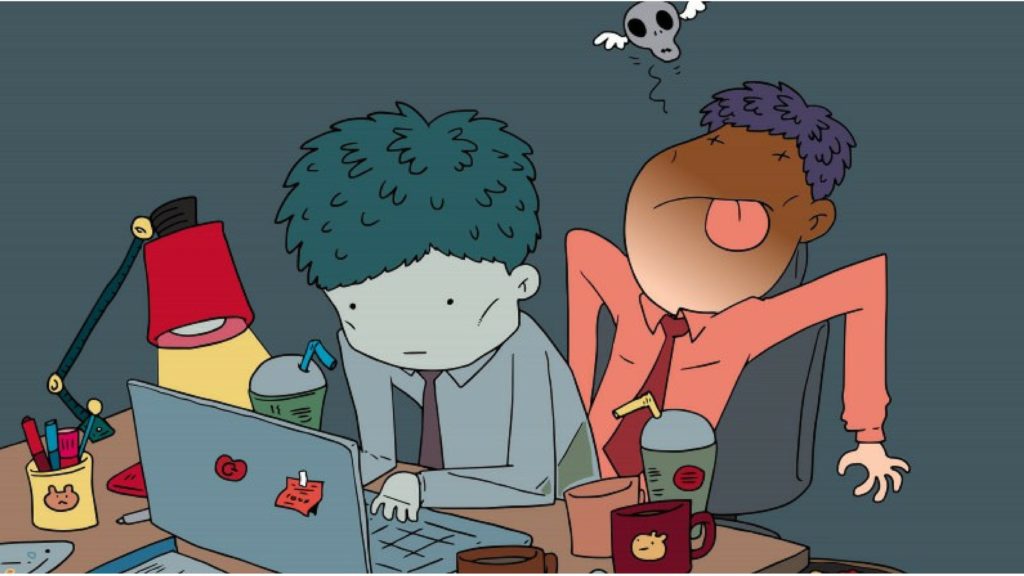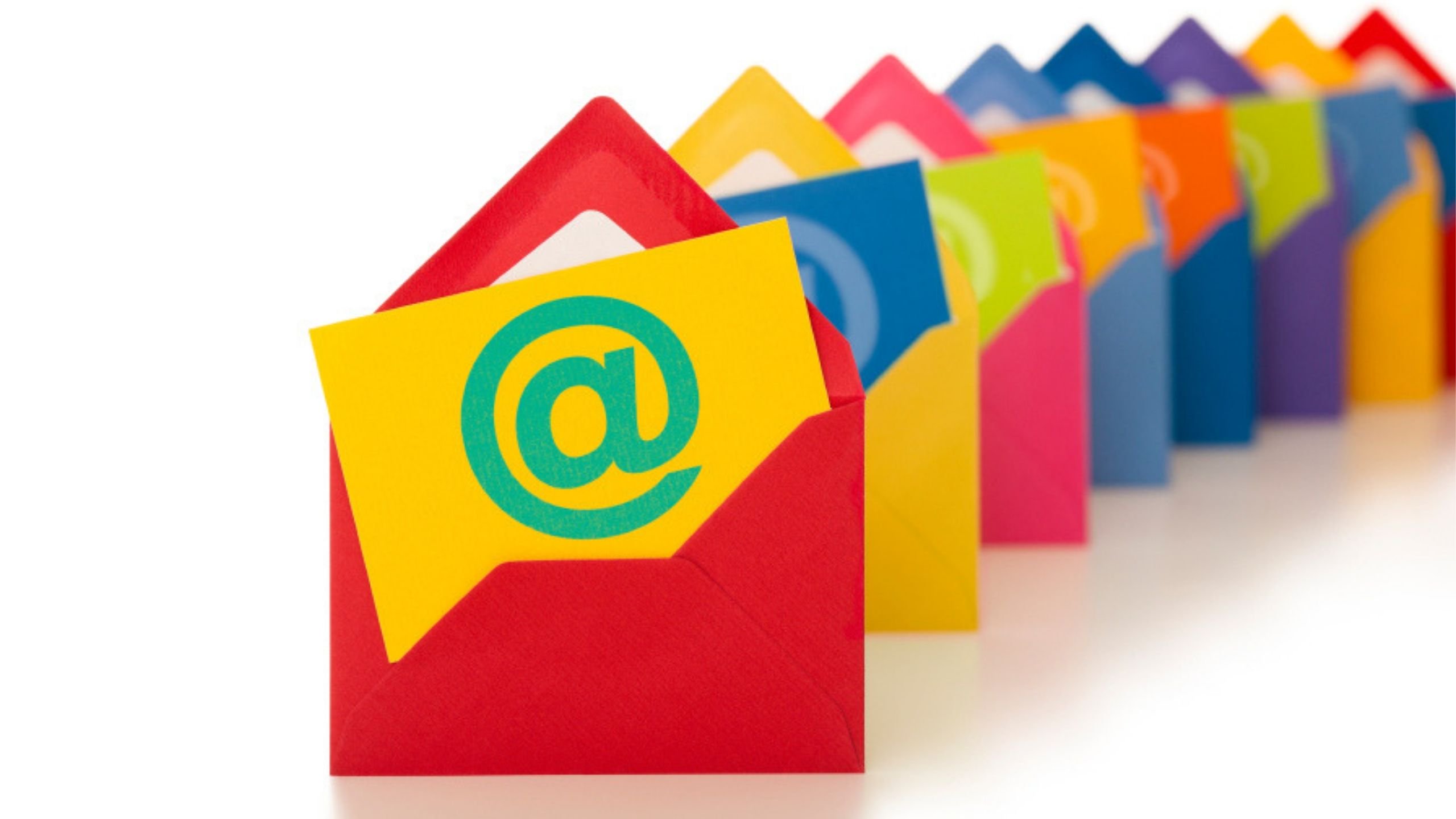Email in school – helpful or a menace to workload?

Electronic mail or email was invented in the late 1960s to mid-1970s. Originally invented to help us communicate better, today you would be forgiven for thinking that emails are unhelpful and a workload burden.
In 1993, I recall sitting alongside my head of Department, observing him pulling up a wooden stool, perched in front of a PC like a meerkat, working on a makeshift desk inside a woodwork-store-come-office; happily satisfied to be typing an email to another colleague who worked in the same building.
Sending a message electronically was quite the revolution at the time, particularly in schools. Gone was the need to walk to the staffroom and post a memo in 30 or 40 different pigeonholes.

One email now did the same job and I remember him feeling quite smug about the fact that he no longer needed to waste time chasing colleagues or bumping into the grumpy deputy headteacher who may give him another job to do, or remind them about all the ones that we hadn’t yet completed.
Such is the life of those who choose to work in schools, as a new teacher I looked on with a sense of wonder.
Email Research
Fast forward 30 years and today, with the outburst of social media, mobile devices in everyone’s hands and applications with notifications 24/7, you can start to get a sense of why so many human beings are wishing to disconnect.
Time and time again, research into teacher recruitment and retention sites that teachers, working in independent and state schools in England are working in excess of 50 to 55 hours per week just to keep up with the day job.
With most full-time teachers tied into the classroom to deliver 20 hours of teaching per week, and with an endless pile of marking, assessments and lesson planning to do, trying to keep on top of an endless supply of email messages, as well as communicate or answer countless questions or poorly-worded messages, is it any wonder that we are all cracking up?
Over the last five years, I have conducted research into my email behaviours and have started to see how I could optimise the way in which I work. Aside from the obvious responses to emails on my personal devices, I started to think about how I close tackle my ‘inbox’ with automated messages, delay delivery, or simply stating a period of the day in which I would or would not read or reply to emails.

Behaviour
Over a three-month period, I analysed how many emails I sent and received as a deputy headteacher. In total, I was sent 2,063 emails by 493 people.
Obviously, I do not work with 493 teachers, and of course one or two of these individuals will send more than one email and three months, but factoring pupils, parents, governors, educational organisations and the day-to-day email subscriptions that one receives, you can start to see that these numbers start to become valid data.
“In month one (October) of the analysis, the data suggested I was embroiled in 1041 conversations and had managed to reply to 30% of them.”
A total of 1,268 emails received in October and in November, there were 1553 emails received. December saw a mere 857. In these three short months, you can start to get a sense of why I found myself more and more tied behind a desk, rather than in a classroom or school corridor.
Of course, there will be some emails that were sent on the move and then acclimate with precarious recruitment issues. There was often countless emails batted to and fro like a tennis ball.
Workload
In the life of a teacher, you could be forgiven for thinking why we are starting to see more and more teachers sitting behind a desk in their classrooms.
Not only are teachers more and more connected to online software to provide rewards, registration and access to various pieces of technology to help improve the quality of teaching and learning, but teachers will also be trying to find a rare 30 seconds in a lesson, between lesson changeover, or during their break and lunch in order to keep up with the endless flurry of emails.

An extra day’s work
Research by TeacherTapp, a platform which surveys 2,500 teachers every day, helps to build a picture of what is really happening on the ground in schools suggests that. CEO and co-founder Laura McInerney says that,
“If you think about parents, in the past they used to send in notes and no response was needed. Now they send emails, and responses are expected. That’s an additional workload” for teachers.
Their data suggest “only 5% of teachers said that they left them out of office reply on the emails. Amongst those who didn’t, 44% said they ignored emails” whilst the others regularly checked.
Their data is helping us to better understand what schools really need to make their working environment better and more productive for pupils – and teachers.
“What is clear, is that few schools appear to have an explicit policy or expectation about how teachers use and respond to emails.”
As we move further and further into a digital future, the research from the team at TeacherTapp emails take up almost a whole teaching day each week!
If we assume it takes three or four minutes to compose an email, one or two minutes to read one, and that an individual is sending and receiving at least 20 emails per day, over the working week this equates to 10.5 additional hours work.
How can we work smarter?
Subscriptions, special offers, or that one email with its hidden workload and an impending deadline, those mind-numbing messages from Ross who chooses to email ‘All staff’ to say, “I’ve lost my stapler. If someone has taken it from my desk, please can you return it.” Worse? When you walk past a colleague at your place of work and your corridor conversation shapes up like this:
A) Have you seen my email?
B) No, I’ve been teaching.
A) Well, in a nutshell … blah, blah, blah.
B) [Teacher thinks patiently to themselves as they step more and more backwards] I’ll read it and get back to you.”
To make matters worse is when that same person emails you to confirm your conversation and what you agreed. To denote that you need a reminder about what they need you to do and by when.
The first education Secretary of State to raise the issue of emails was Nicky Morgan MP, focusing on the idea that teachers should not be expected to answer emails after 5 pm each day. Four years later, are emails helpful or a menace to teacher workload?

“There is no ideal solution for tackling email culture, simply because we all lead separate lives and need to find a balance between how we work and how best to engage after working hours.”
Some people have argued that travelling to work as well as answering and replying to emails should be built into our contractual hours. How this works for teachers, I don’t know, but I suspect this will become a more frequent conversation as we become even more immersed in digital technology.
I am unsure how we will tackle this in society, never mind our schools. We certainly need to look to the technology providers to come up with algorithms and analytics to help optimise the way we work and reduce the volume of notifications.
To advocate that teachers should only check emails during the school day, or when they are not teaching is not an intelligent enough solution. Asking for colleagues to refrain from sending emails, or expecting a reply between the hours of 7:30 PM and 7 AM is not helpful for people who have flexible working conditions or personal circumstances that might impact on the work a typical 9 to 5 day.
Email Tips
Restricting all staff emails via one conduit is a good solution, and advocating that employees do not use personal devices comes with both pros and cons. The positive on emailing on a small device is that I can respond on the go to manage workload.
The negative is that I’m using my own device to manage my work and some would argue that perhaps a mobile phone or at least a mobile contract should be paid for by the employer if they want to sustain the level of work that they are expecting someone to do. So you can see, there is no ideal solution, and I suspect if employers were asked to meet the costs of mobile contracts to manage emails, they may insist that people spend less.
If I could choose one thing I like to see the back of, it will be that ‘Reply To All’ setting. There’s nothing worse than a whole group communication. In the business world, many companies are using platforms such as Slack to streamline communications, so the conversations are not lost.

This allows any individual to access any conversation or thread and pick up where they last dipped in. It places the individual back in control. I am discovering new software such as this, but it is rarely being used in schools and I think it could be a solution.
People will want to work in a way that suits them but we need to think more conscientiously about our growing email habits. So, back to our familiar corridor conversation. Let’s try this;
- A) Have you seen my email?
- B) No, I’ve been teaching, [keeps walking, but I’ll read it tomorrow. Thanks! [walks off]
We don’t want our teachers sitting in front of digital devices all day. We need them in front of students!
With almost 250 employees, I conducted a personal email analysis at work and discovered the following hallmarks are how to use ‘email more effectively’:
1. In general, messages sent during lunchtime and around the start of working hours Tuesday to Thursday received the best response rate from colleagues. So, trying to seek any answers or responses to deadlines on a Monday and Friday were simply out of the question.
2. To elicit a response from the reader, the sweet spot for email length is between 50-125 words, yielding response rates above 50%.
3. Email veterans will know that subject lines is a critical step in writing an email that will have a high open rate. The length of your subject line impacts response rates to, and the optimal length is shorter than you would expect. The ideal subject line will only contain three or four words, excluding email conventions like Re: and Fwd:
4. I also discovered that asking a number of questions in an email also has its sweet spot. Ideally, the optimum is 1 to 3 questions in one email gave me a 50% response.
5. Shorter sentences like this one also work.







Responses